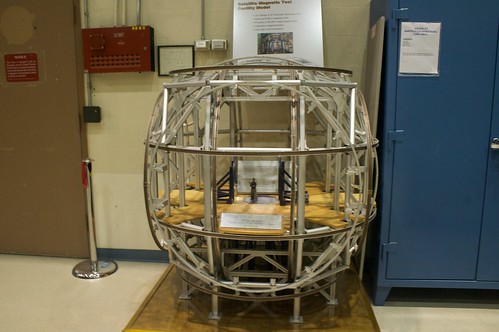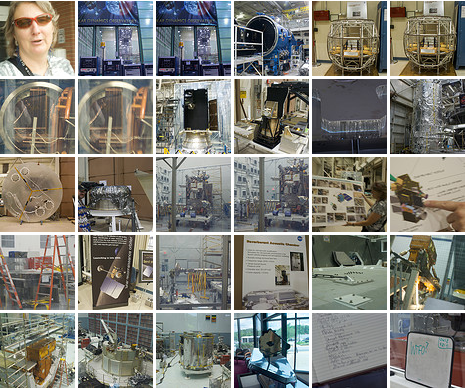@technosailor Come and visit me! Just ask for HMI on SDO. They all know me – I am the cutest instrument on SDO plus I am the one tweeting!
The war of cuteness is on at NASA Goddard Space Flight Center where the team is working on a variety of space projects including the Solar Dynamics Observatory (SDO), the Lunar Reconnaissance Orbiter (LRO) and the Hubble servicing mission.
I had a chance to visit NASA yesterday for a very intimate tour of the projects they are working on and to discuss, among other things, future missions NASA plans to embark on.
This, of course, a tertiary result of my post the other day where I noted that NASA was engaging more and more in social media. As I noted in that post, this stuff is like being a kid again.
My tourguide, Steph Stockman, is playing an integral part in the development of LRO which will be launched later this year. LROs mission is to go into low polar orbit around the moon for at least a year and gather intel about the surface of the moon in preparation for a return to the moon somewhere in the 2017 timeframe.
A fascinating tidbit I learned about LRO is that there will be a laser-sight, of sorts, that will essentially focus on a fixed point in space (satellite?), or at least a known point in space. This will provide a reading that will allow LRO to stay in orbit over the moon. We currently don’t know entirely what the surface of the moon looks like, so where typical orbiters might be able to use the surface of, say, the earth as known quantity, NASA will have no such luck with the moon.
Also of interest is that the dark side of the moon is registering significant amounts of Hydrogen which indicates a potential for water. At this point, we don’t know and the LRO is expected to provide some of that data.
Later in the day, we explored the concept of a manned mission to Mars. Steph thinks that might not be for 50 years as certain scientific problems have yet to be solved. Specifically, once a human body spends sustained amounts of time outside of the earth’s magnetic field, what happens? To provide perspective, the moon is on the outer fringes of the earth’s magnetic field and dips in and out at different points in its orbit. As a result, most, if not all, of manned space flight has occurred within the magnetic field and no one really knows what it would be like outside.
To explore this problem, Goddard has a anti-magnetic sphere (pictured below as a scale model) where the earth’s gravity is counteracted by an equivalent polarization allowing for an anti-magnetic zone for testing. One wonders how this affects the iron in a human’s blood stream.
Another problem with a manned mission to Mars is that the planets move at different speeds through orbit, and such a mission with future technology would probably take two years to complete. A mission would have to be launched at such a point that allows the most efficient route to and from Mars. People much smarter than me, scary folks with pencils, will have to figure out that math.
Thanks, Steph, for the tour. Can’t wait to see the LRO launch. :) Click on the montage below for the full photoset from this tour.


